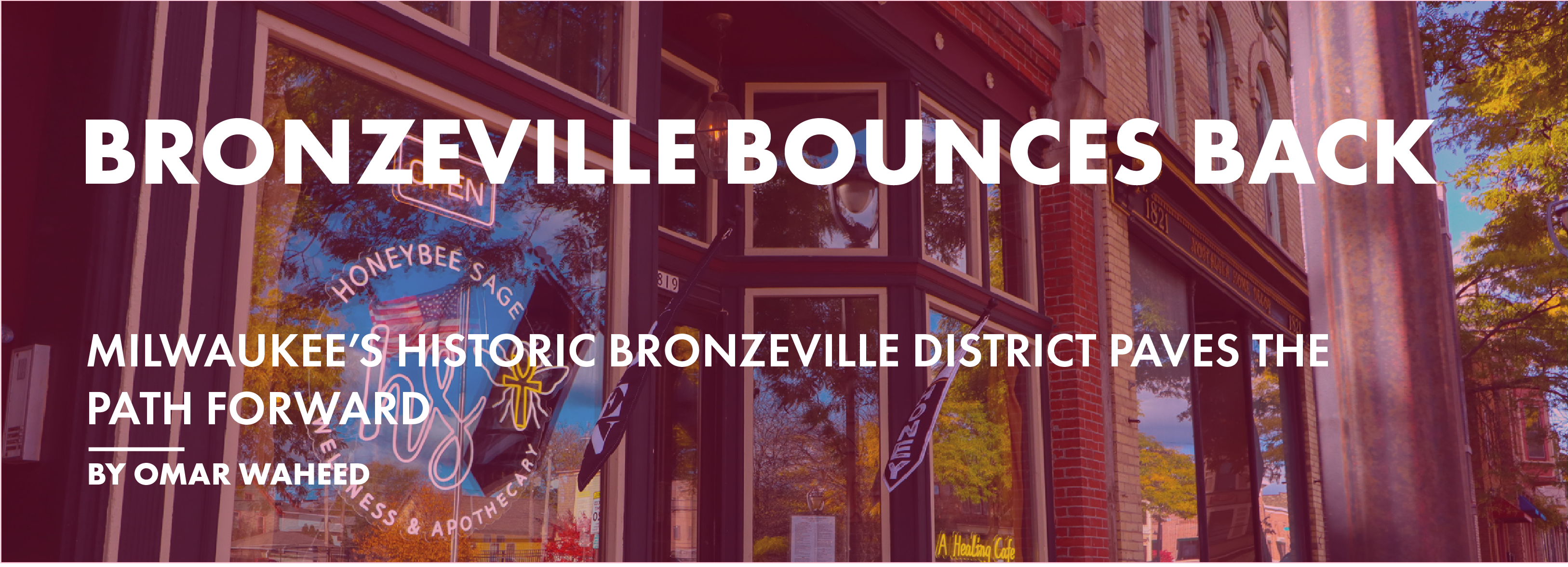The heart of Milwaukee was ripped out of its chest — but it is finally on its way back.
Milwaukee’s historic Bronzeville District has seen its share of ups and downs since its inception in the early 1900s. But after decades of attempts to get the area revitalized, the neighborhood has found solid footing to come back as an arts and entertainment district.
Co-founders of the Bronzeville Collective MKE, Lilo Allen and Tiffany Miller, bring the first effort of its kind to revitalize the area. Allen, who is from the newer Bronzeville District, has seen its better points and some of its lows. When she was younger, the district was known for its tight-knit community, as it was in the 1910s through the 1950s, but saw it come apart.
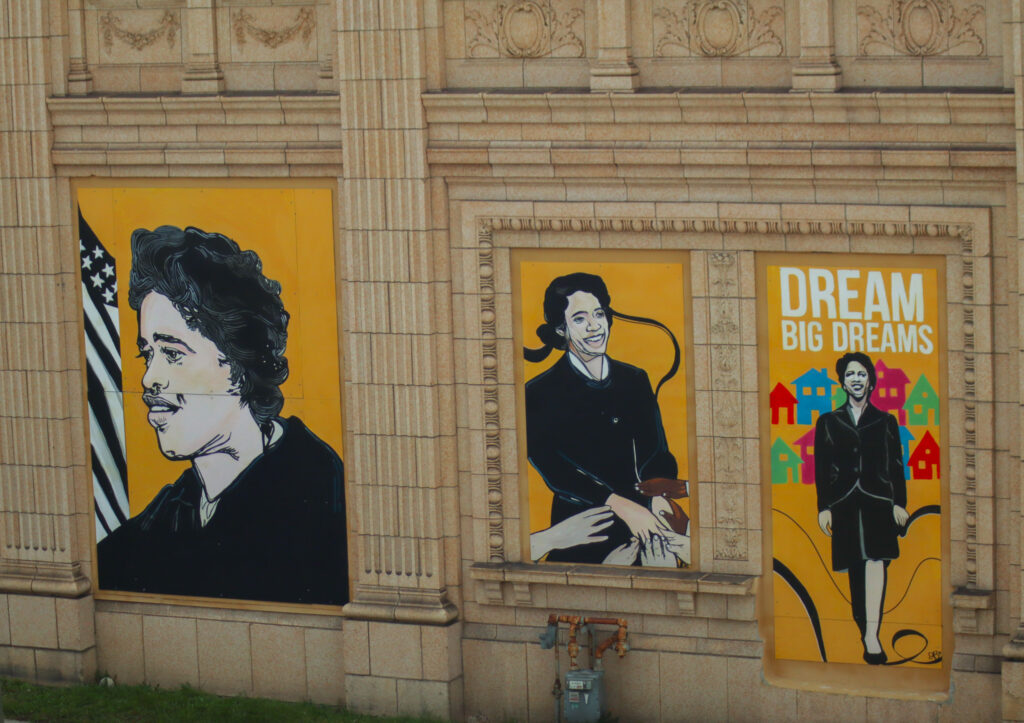
“When I was younger, there was always something to do out there … That changed a lot in the early 2000s,” Allen says. “Since our arrival on North Avenue, we’ve seen all these businesses sprout up, and I think it has to do with the Black women in leadership within the community.”
Allen is one of the driving forces in Bronzeville’s revitalization. The Bronzeville Collective is a central part of the community that allows local entrepreneurs without a storefront to bring in their goods.
Her shop is decked out with art from her own business, Papyrus & Charms, her partner’s business, FlyBlooms, and over 30 local brands. The shop smells of incense and soft, mellow music plays. You can find clothing, crystals, books, art, music, beauty products and much more that any local vendor brings in.
The shop has a welcoming atmosphere and a familiar feeling to it. It used to be a Foot Locker. Allen fields patrons who come in looking for the old shoe store but end up still shopping when they find out it’s now a store with local goods from the area.
Now, Allen is at the forefront of bringing the historic district back to its former glory as the Bronzeville Collective celebrated its fifth anniversary in early November. Additionally, Gov. Tony Evers has invested $5 million into the Bronzeville Center for the Arts. The investment will help transform the site of the former Wisconsin Department of Natural Resources into a facility for exhibitions and more.
“Bringing that name back — Bronzeville used to mean something,” Allen says.
The old
The historic Bronzeville District was known as the heart of Milwaukee and in the mid-20th century was one of the nation’s largest booming Black communities. Historic Bronzeville’s commercial areas encompassed four streets: Third, 12th and Winnebago Streets and, through the middle where businesses were focused, Walnut Street.
The district was heralded for its advancement of the Black community with its businesses and entertainment — but it was a forced location due to segregation.
Milwaukee’s Black population was stuck in the historic Bronzeville District and decided to make the most of it, according to Kitonga Alexander, a historian responsible for Milwaukee Bronzeville Histories. It was an area designed by forced circumstance — not by choice.
“Milwaukee’s [Black] community was primarily centered around being resourceful when resources weren’t available,” Alexander says.
Bronzeville started to see its systematic collapse in 1949 when Congress passed the Housing Act, also known as urban renewal, with the intention of revitalizing areas with higher population density housing with fewer, more expensive homes. Urban renewal did accomplish just that, but the result saw the start of the collapse of Bronzeville.
The complete end of Bronzeville came with the building of the Interstate 43 freeway, which cut through most of the businesses on Walnut Street. Homes and businesses that would later be regarded for their historical importance were demolished in the name of developing Milwaukee.
Places like Malcolm X’s childhood home and Milwaukee’s oldest African American church, St. Mark African Methodist Episcopal Church, were torn down to make room for the freeway and urban renewal.
As a result, Bronzeville’s history was lost — in a “structural sense” at least, as Alexander describes it.
“The reality is that the majority of Black history in Milwaukee has been erased or destroyed,” Alexander says. “Most people, and Milwaukee historians, are grappling with that.”
Hopes for recovery were diminished as segregation relaxed, and the Black dollar was spread out, according to Alexander. The purchasing power to fuel another place like Bronzeville seemed impossible, as Milwaukee’s Black population was able to live in new areas of the city for the first time.
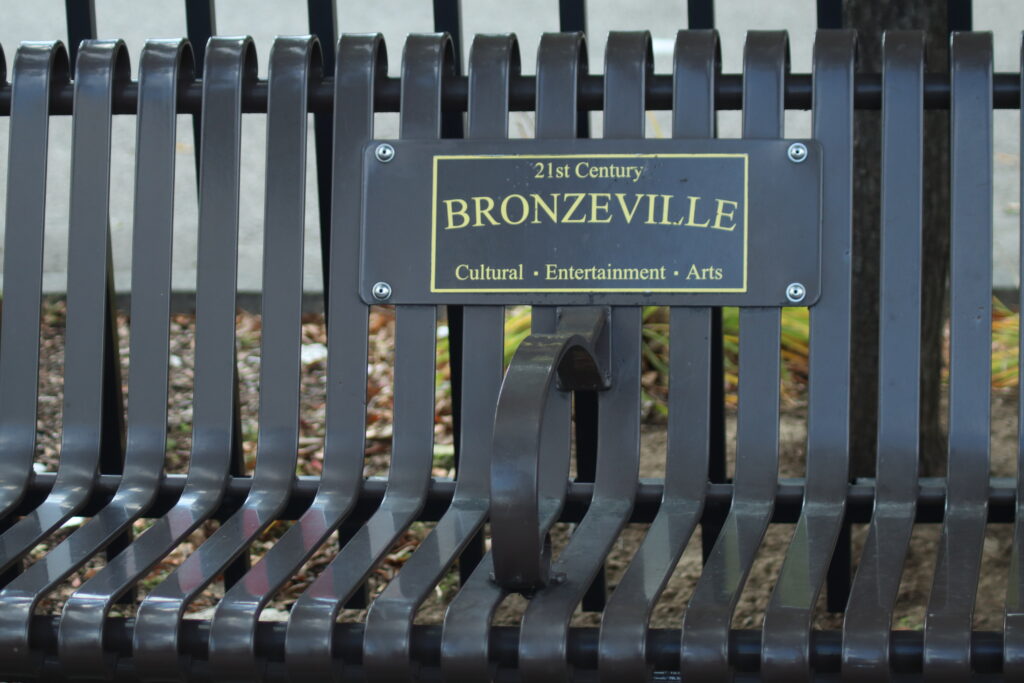
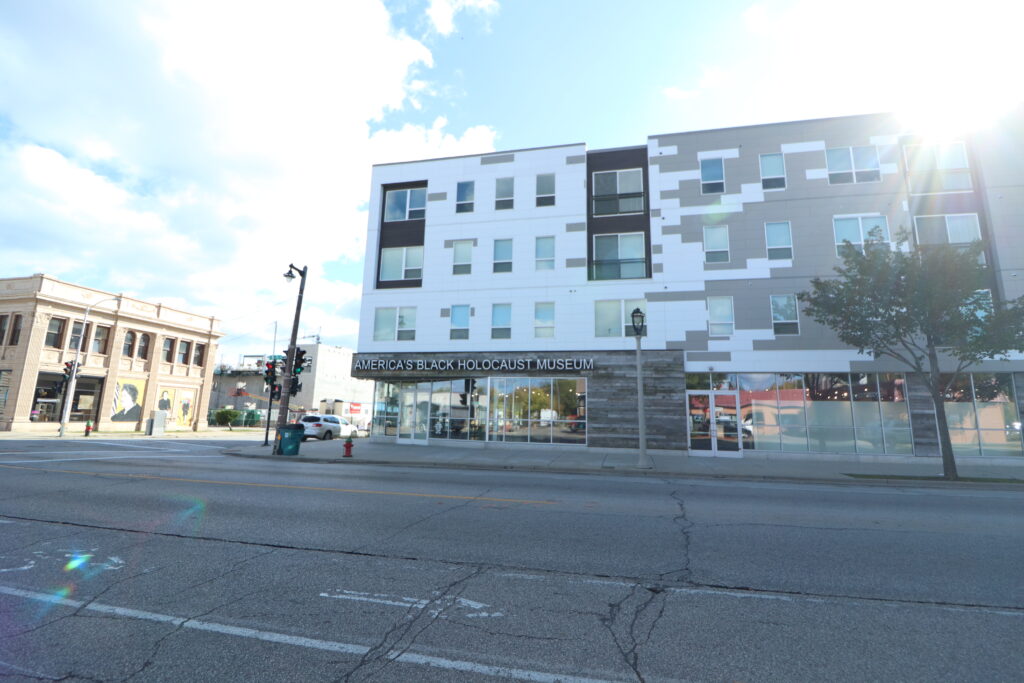
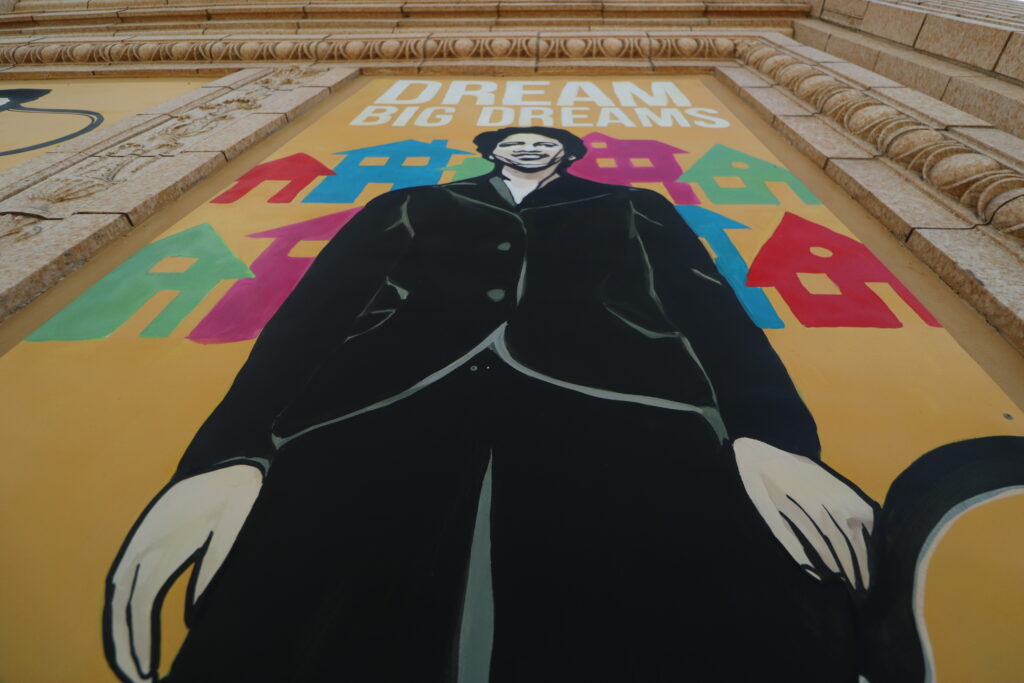
On its way back
Attempts were made for years to try to get the district back to its former glory but rarely did any effort bear fruit. The first successful venture to bring people back to Bronzeville was in 1988 with the America’s Black Holocaust Museum.
In 2000, then-Mayor of Milwaukee John Norquist found reviving Bronzeville was important and pushed for investments in the area, but for years the project was stalled. Mayor Tom Barrett then picked efforts back up. About $3.6 million of funds were allocated to redevelopments and more. Eventually, it led to the creation of the seven-person Bronzeville Advisory Committee in 2010. The new committee pushed to create plans for a new Bronzeville, but efforts from the committee did not amount to much for the next decade until developments, like the museum, came to fruition.
The new Bronzeville, where current efforts lie, is meant to capture the spirit of the old historic district, but the location is different. The new Bronzeville is primarily on North Avenue and North Dr. M.L.K. Jr. Drive on Milwaukee’s near north side.
In 2018, Allen and her partner, Tiffany Miller, pitched the idea for the Bronzeville Collective at the RISE MKE Pitch Competition. The duo won and started a path forward to revitalize the area.
“The name, Bronzeville Collective, I already had that in mind,” Allen says. “I named it as such because it was a legacy that was intentionally destroyed in the area, and I meant to pay homage to that.”
Alexander, as a historian, does see the progress finally moving forward with the activism of millennials, like the start of the Bronzeville Collective. He feels it is too early to judge this attempt as a true success until longevity and businesses flood the area like the historic district.
Bronzeville on the rise
But businesses have been coming — slowly at least.
HoneyBee Sage & Wellness Apothecary, at 1819 N. Dr. M.L.K. Jr. Drive, has been at its Bronzeville location for almost a year now. The business serves tea, food, mocktails, honey, herbs, oils, medicines and a slew of other items to fit its name as an apothecary.
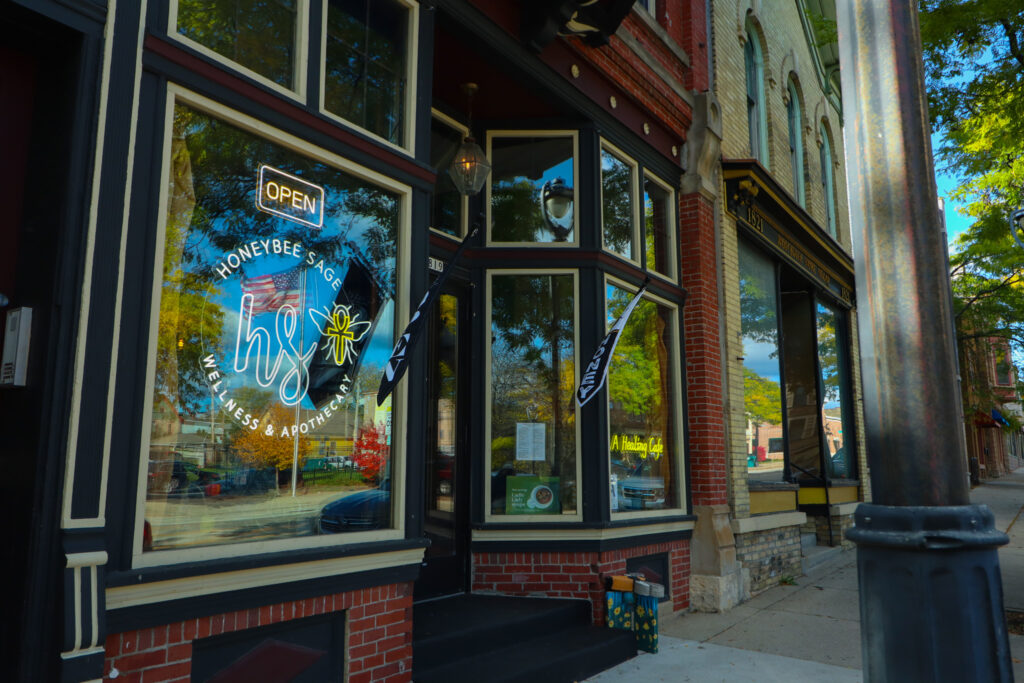
Angela Mallett, owner of HoneyBee Sage & Wellness Apothecary, dreamed of having her business in Bronzeville. Her business has been around Milwaukee for nearly five years now at a couple different locations but is celebrating its one-year anniversary in the district in late November.
“To be on King Drive was centered around the fact that it’s kind of right at the edge of the proverbial railroad tracks, if you will,” Mallett says. “We always have a focus as a business to be accessible to Black and brown communities with ease.”
Mallett is not alone in her venture into Bronzeville. Stores like 414loral, at 1739 N. Dr. M.L.K. Jr. Drive, have come to the area. The founder, Mikel McGee, opened her newest location in Bronzeville in the early fall of this year.
Allen sees this as a positive move for the community she has worked hard to bring back up. The Bronzeville Collective is founded on the basis of the community she grew up in. She is very quick to tell people what to try out in the area and has an ear for what is going on in the community.
Allen, along with the Bronzeville Collective, has been pushing community-involved wellness initiatives to make a physical difference past businesses coming back. The store is often a focal point for community engagement as the store is a drop-off site for several nonprofits and other community initiatives. The last round of donations was for feminine hygiene products.
“I wanted to create a sort of third space for folks. So not just this physical space, but a community that is almost tangible,” Allen says. “And folks know when you walk into this space — welcome home. I want that to translate online and for when folks think of Bronzeville, they think community.”
